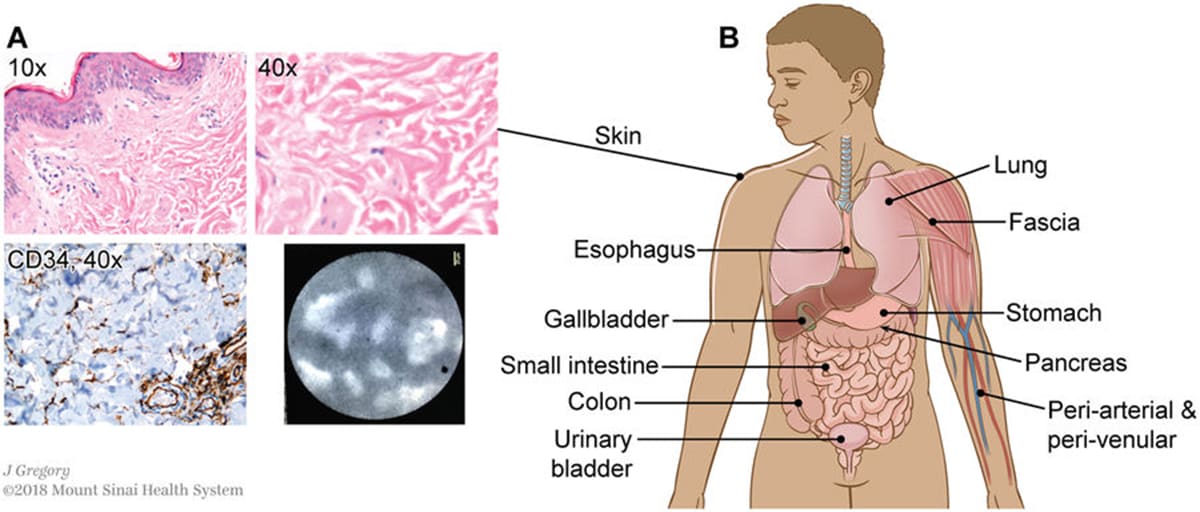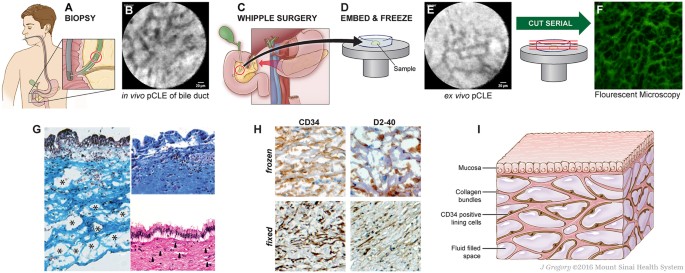Hidden beneath our skin and woven through our body’s tissues lies a mysterious network that scientists have only recently brought into focus. The interstitium, a newly discovered ‘organ’, represents a groundbreaking revelation in human anatomy that challenges everything we thought we knew about our body’s inner workings.

Diagram showing the structure of the interstitium. Credit: Wikipedia
Imagine a vast, interconnected highway of fluid-filled spaces running throughout your body. These microscopic channels, previously invisible to traditional scientific methods, act like a complex transportation system for cellular communication and fluid movement. Researchers using advanced imaging techniques have unveiled this remarkable biological network that extends from beneath the skin to the lining of vital organs like the digestive tract, lungs, and urinary systems.
For decades, medical professionals believed these tissue layers were solid, dense structures composed of collagen. The breakthrough came when scientists employed a cutting-edge imaging technique called probe-based confocal laser endomicroscopy (pCLE), which allowed them to see living tissues at an unprecedented microscopic level. What they discovered was nothing short of revolutionary: a dynamic, fluid-filled network that resembles an intricate highway system rather than a static wall of tissue.

Detailed illustration showing the interstitium’s structure. Credit: NBC News
The interstitium isn’t just a passive space between cells. It appears to play crucial roles in multiple bodily functions. Acting like a biological shock absorber, these fluid-filled spaces protect our organs during daily movements and potentially provide critical pathways for cellular communication. More intriguingly, researchers believe these spaces might be instrumental in understanding how diseases like cancer spread through the body.
One of the most fascinating aspects of the interstitium is its potential connection to systemic health. The fluid-filled network could explain complex medical phenomena, such as how inflammatory conditions develop and how immune responses are triggered. By serving as a conduit for lymph fluid – which contains infection-fighting white blood cells – the interstitium might be a key player in our body’s defense mechanisms.

Microscopic view of the interstitium’s structure and distribution. Credit: Nature
The discovery challenges traditional anatomical understanding and opens up exciting new research directions. Scientists estimate that this newly recognized organ represents approximately 20% of the body’s total fluid volume, making it a significant component of human physiology that had remained hidden in plain sight.
While the interstitium is not yet officially classified as an organ, its potential implications for medical research are profound. Researchers are now exploring how this network might contribute to our understanding of cancer metastasis, inflammatory diseases, and potentially even aging processes. The fluid-filled spaces could provide insights into how diseases develop and spread at a cellular level.
Dr. Neil Theise, a leading researcher in this groundbreaking study, emphasizes that this discovery is just the beginning. “The more tissues I saw, the more I realized it’s everywhere,” he noted, highlighting the widespread nature of this newly recognized biological structure. Future research will undoubtedly continue to unravel the mysteries of the interstitium and its role in human health.
As medical technology advances, who knows what other hidden marvels might be waiting to be discovered within the human body? The interstitium serves as a powerful reminder that even in the 21st century, our understanding of human anatomy is still evolving, with incredible revelations yet to come.
References:
Wikipedia – Interstitium – link
NBC News – Scientists Say They’ve Discovered a New Human Organ – link
Nature – Structure and Distribution of an Unrecognized Interstitium in Human Tissues – link
Categories: Health, Medical Science, Research, Scientific Discovery, Unsolved Mysteries
Tags: Breakthrough Research, Health Science, Human Anatomy, Interstitium, Medical Discovery, Medical Technology, Scientific Research
Religion: Secular
Country of Origin: United States, World
Topic: Medical Science
Ethnicity: Universal

